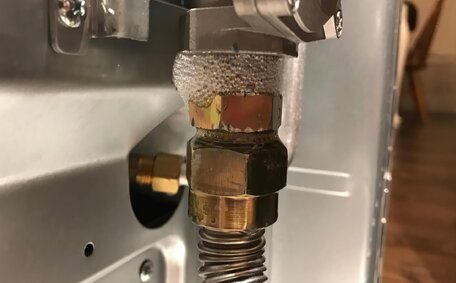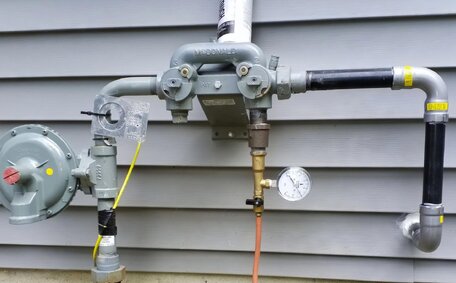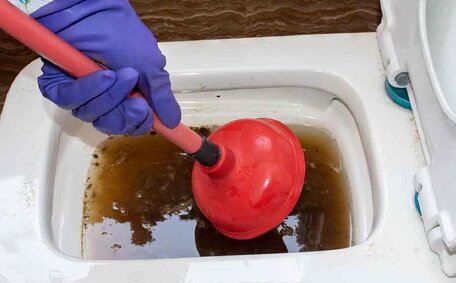Introduction to Pipe Relining
Pipe repair revitalises damaged sewer and drainage pipes using a no-dig approach, preserving your lawn or driveway from disruptive excavation. This non-intrusive method not only saves the yard from unwanted upheaval but also preserves historic sewer pipes as the resin-saturated lining creates a new pipe within the aged structure.
Trenchless pipe repair solutions are an excellent strategy to fix your plumbing issues such as damaged or troublesome pipes, offering several benefits over traditional methods of excavating and replacing pipe structures. Pipe relining is minimally invasive, provides durable repairs that outperform traditional methods, and limits disruption to properties and roads, offering significant benefits for homeowners.
It’s essential to understand pipe relining costs to budget effectively, as the quick process, typically one to two days, can offset expenses. Additionally, it can be cost-saving by eliminating the need for expensive excavation and removal of cracked or broken pipes.
There are several factors, including size and length, that influence the cost of relining pipes. The main elements include the extent of damage, the size length damaged pipe, location and accessibility, and the type pipe material. Comprehending how various elements, such as the pipe type, affect relining costs helps homeowners weigh repair against replacement.
This article aims to enlighten you about pipe relining Sydney methods and provide a nuanced analysis of the cost pipe relining Sydney Water projects typically entail. A comparison of relining vs pipe replacement costs will also highlight why trenchless sewer repair is ideal for the pipe which requires a more economical alternative.
Pipe Relining vs Replacement
Given the considerable expenses often linked with sewer repair, applying new lining within pipe structures frequently presents an alternative that can cost less than full replacement. Choosing to repair the existing pipe, with technologies such as the colour camera and air water tests, is a smart way to fix plumbing issues, saving on excavation costs, directly leading to financial savings and sparing your home from disruption.
The price for pipe relining, akin to air hot water systems, offers a way fix for pipes cost-effectively, ranging between $80 - $250 per foot, significantly less than pipe replacement costs of $400 - $1000+ per metre. Craftsmanship is applied in inversion pipe relining where point access holes are used to cut, grind, and mill into the pipe, enabling the epoxy resin liner to be set into position. The proficient pipe relining process is effective to get job done swiftly within 1-2 days by forming a robust pipe into existing structures, markedly quicker than the 3-5 days possibly needed for a pipe replacement involving more excavation.
Trenchless pipe relining also incurs lower labour costs. There is no dependence on cumbersome machinery for trenchless pipe repairs, as this method bypasses the need for digging and removal of debris.
Our team, acknowledged for their professional expertise, demonstrated exceptional efficiency in providing cost-effective pipe relining solutions as a key component of our comprehensive plumbing services, often needing fewer specialists than traditional pipe replacement. Sewer relining may reduce your budget, as it avoids extensive restoration work, with potential savings compared to charges that can reach approximately $800 per metre for additional repairs.
Despite limitations, pipe relining offers a quick, minimally invasive, and cost-effective solution in many situations. Considering the peace mind and assurance it brings, many find themselves contemplating 'Is pipe relining worth it for my situation?', seeking peace of mind in their plumbing decisions. Given it can extend the life of your pipes for an additional 50 years, many would use them again and highly recommend it as a valuable investment. It also circumvents significant costs and disruptions of replacing the entire piping system by excavating your property.
Pipe Diameter
The diameter of the pipes being relined is a key factor in determining the overall price. Larger diameter pipes necessitate additional lining material and installation effort.
Blockage resolution, for example, costs approximately $100 per metre for specific relining needs. Whereas relining 150mm pipes might be $150 per metre, and 200mm pipes up to $200 per metre.
It also requires more time and effort to pull the resin-saturated liner through wider pipes and ensure it securely adheres inside pipe structure. Consequently, larger diameter pipes may incur higher labour costs due to the increased effort to secure the lining.
More point of access needs to be cut into wider pipes, addressing the task of joining old pipes to new, so the lining equipment and materials can be inserted. The number of access holes required increases with pipe diameter. All these considerations make the process more complex and expensive for bigger pipes.
While smaller pipes like 100mm can often be relined from a single access point, at least three holes may be needed for larger 400mm+ main sewer drains, spaced every 25-50 metres to successfully complete the relining. The access point cutting and sealing is included in pricing.
In summary, The scale of material, work, and access points expand with the diameter, shedding light on how pipe relining costs grow with larger pipes. But relining remains far more affordable than full replacement, even on wide 500mm+ pipes.
Pipe Length
The size and length of the damaged length pipe being relined is a primary factor affecting the total relining costs. More length of pipe means more lining material is required. And the installation process takes longer for extended pipe runs, similar to the impact of water flow has when it speeds up the curing time of lining materials.
For example, relining a relatively short 10-metre segment of 100mm diameter sewer drain pipe may cost around $1000. Concerned about how much does sewer pipe relining cost? A 50 metre section of the same diameter pipe could reach $5000 or more due to additional material and labour time.
Longer pipes may also require more access points cut into the pipe so the lining equipment and materials can be properly installed throughout the full length. This access point preparation also adds expenses.
When pricing jobs, reputable contractors will take accurate pipe length measurements to determine the exact liner footage needed and estimated project duration. Extended pipe runs or a long residential lateral line feeding into the main sewer will understandably cost more to reline versus a short stub-out branch drain.
However, even on longer 100 metre+ pipes, relining remains far more cost-effective than full replacement. And the project’s time frame is usually just 1-2 days with minimal excavation required.
Extended pipe runs or a long residentialfecting the cost of relining. Different pipe materials in your sewer present various challenges and considerations during the process.
PVC and plastic pipes usually provide the simplest and most affordable relining job outcomes. Thny damaged or misaligned sections of cast iron pipe may also need repairing prior to relining.
Specialised liners are often needed to conform to the curves of concrete pipes.
Understanding what your pipe made out of before any work begins, enables contractors to anticipate particular challenges, choose the appropriate liner type, and account for additional costs in their pricing. But regardless of the initial pipe material, pipe relining proves to be less disruptive and costs remain notably lower than a full replacement.
The resin liner, once inserted into the smooth inner walls of PVC, adheres well. And PVC’s flexibility allows easy installation of the liner with minimal access points required.
Cast iron pipes are also relatively straightforward to reline. But the liner does pipe relining all on its own? No, it must be pulled through forcefully, which consequently increases labour time and costs. Any damaged or misaligned sections of cast iron pipe may also need repairing prior to relining.
Concrete or clay pipes can present difficulties due to their shape and brittle natll impact the complexity and cost of the project. Each junction or bend adds labour and material expenses.
At each junction, the liner has to be carefully navigated from one pipe from $100 per metre. But for a multi-junction series of pipes, prices could be $150 per metre or higher. The number of technicians and hours required also increases with more pipe branches and bends.
Another consideration is that extra access poin than simple straight runs, it remains far more affordable than full replacement. And it can usually be completed in 1-2 days with minimal invasive excavation.
Accessibility Challenges
The accessibility and location of the pipes needing reit points. If the pipe is buried deep or runs under structures, special equipment is required to dig down and gain access. This excavation work adds labour and equipment costs.
Pipe relining beneath landscaped areas also necessitates post-procedure restoration work. The relining crew must carefully excavate under garden beds, trees, patios or pool areas, where hidden issues may come out, increasing the work complexity.
Traffic management and road cutting permits can also be required for pipes under driveways or roads. All these accessibility factors can significantly increase the price of relining compared to open trenches.
Despite potential cost increases due to challenging access, relining is generally much more affordable than full pipe replacement. And the best pipe relining crews have the specialised tools and techniques to gain access with minimal disruption or damage.
The accessibility and location of the pipes needing relining can affect the difficulty and cost of the project. The pipe needs attention when running under buildings, paved areas, or landscaped sections of a property often present access challenges.
Ways to Reduce Relining Costs
Regular inspections and prompt responses to tree roots intrusions can help prevent scenarios that might damage your pipes and result in them requiring relining. Annual drain clears, investing in root shields, and fixing minor leaks early are proactive steps.
Additionally, when seeking your pipe relining service, gathering various quotes rather than settling on the preliminary estimate can often lead to significant financial savings on substantial projects.
Conclusion
When weighing the costs and benefits of repairing or replacing your sewer pipe, understanding the key factors that influence sewer line relining pricing provides homeowners with the insights needed to make informed choices. Our attentive team offers personalised consultations for accurate pipe relining quotes and tailored services. Contact your plumber to discuss professional relining options by calling 000 000 or emailing [email protected].
Pipe diameter, length, material, complexity, and accessibility all play a role in determining the expenses for relining Sydney pipes.






